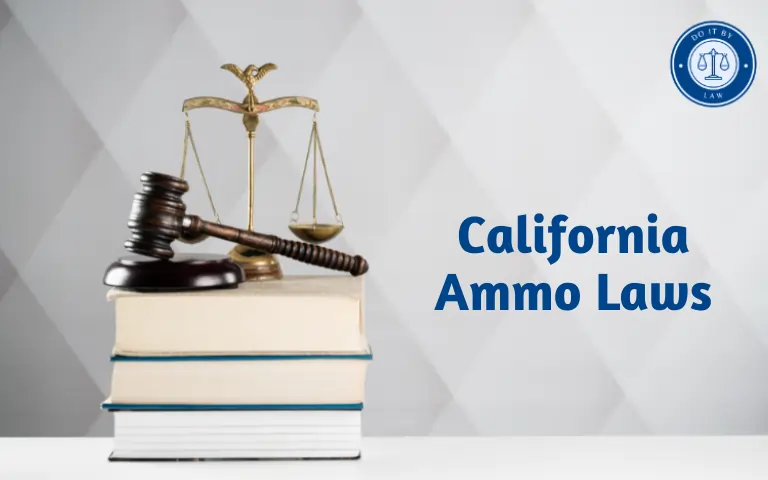California Magazine Law: What You Need to Know
California State has longstanding laws restricting ammunition magazine capacity that have faced repeated legal challenges from gun rights advocates. This article provides a comprehensive overview of California Magazine Law regulations, tracing the history, key provisions, recent developments, and ongoing debates.
Background of California Magazine Law Restrictions
California enacted its first ammunition magazine capacity restrictions in 2000 under Senate Bill 23. This prohibited manufacturing, importing, selling, or giving possession of any magazines holding over 10 rounds. The law aimed to curb gun violence and mass shooting deaths.
Several enhancements followed over the years, like Assembly Bill 144 in 2013 which further banned acquisition and receipt laws for large-capacity magazines. Possession also became illegal and subject to narrow exemptions.
The 2013 law allowed continued ownership under a “grandfather clause” for magazines acquired before 2000. But November 2016’s Proposition 63 referendum ended that exemption through voter approval.
Currently, under Penal Code Section 32310, it is illegal in California to manufacture, import, keep, offer, expose for sale, give, lend, or receive any large-capacity magazine able to hold more than 10 rounds.
Who Do California Magazine Law Restrictions Apply To?
The ammunition magazine capacity restrictions apply broadly under California state law. The manufacturing, sales, transfers, and possession ban covers both firearms dealers and private individuals.
Magazines holding 10 rounds or less remain legal to buy, sell, or possess. However, other large-capacity magazines cannot be lawfully imported, exported, sold, or received by any party with rare exceptions for law enforcement, government agencies, or movie/TV productions.
Key Provisions & Exemptions in California Magazine Law
California’s magazine capacity restrictions under PC 32310 contain important details about prohibited items, penalties, exemptions, and more:
Banned Magazines
Any ammunition feeding device with the capacity to accept more than 10 rounds qualifies as a prohibited “large-capacity magazine” under California law, including detachable magazines used with semi-auto pistols, rifles, and shotguns along with tube magazines.
Grandfather Clause Exemptions
Individuals who obtained large-capacity magazines lawfully before January 1, 2000, are exempt from the possession prohibition under California’s original grandfather clause. However, magazines acquired after that cutoff violate state laws.
Further Exemptions
Sworn peace officers, federal law enforcement agents, and other specialized government personnel can possess large-capacity magazines under exemptions, along with gunsmiths in limited cases.
Magazine Repair Restrictions
Gun owners cannot enlarge existing magazines to increase ammo capacity over 10 rounds. However, they may repair magazines legally obtained before January 1, 2000 back to their original working order.
Magazine ‘Locking’ Requirements
To comply with the possession ban, owners of grandfathered large-capacity magazines must use a magazine locking device that prevents ammunition feeding or removal. Simply pinning the magazine does not suffice.
Penalties
Violating California’s large-capacity magazine restrictions triggers criminal penalties including potential misdemeanor or felony charges, jail time up to a year, and/or fines ranging from $100-$1,000 upon conviction.
Recent Legal Challenges to California Magazine Law
California’s magazine capacity limits have faced repeated constitutional challenges from gun rights groups since originally enacted, resulting in an ongoing legal saga.
In one high-profile case, Federal District Judge Roger Benitez overturned the state’s magazine confiscation law as unconstitutional under Second Amendment grounds in June 2021 following a lengthy trial. However, the Ninth Circuit Appeals Court later granted an emergency motion staying Benitez’s order pending appeal. The matter remains in litigation.
Separately in September 2022, Judge Benitez ruled California’s overall magazine restrictions unconstitutional too. Again the Ninth Circuit intervened to halt the decision pending further review.
With conflicting federal court decisions, the ultimate fate of California’s magazine law remains uncertain. The case may reach the Supreme Court. Meanwhile, the prohibitions stay in effect during appeals.
Controversies & Criticisms Around California Magazine Law
California’s ammunition magazine capacity limits spark heated debates between lawmakers, law enforcement officials, and Second Amendment advocates. Key areas of controversy include:
Constitutionality
Gun rights supporters argue magazine restrictions violate the Second Amendment by impeding self-defense rights. However, the Ninth Circuit previously upheld the rules in a 2016 decision later vacated by the Supreme Court.
Public Safety Impact
Proponents contend lower magazine capacities reduce gun violence casualties by forcing shooters to reload more often. But critics argue determined attackers circumvent restrictions, while lawful owners get disadvantaged.
Enforcement Difficulties
With millions of grandfathered magazines already in circulation, enforcing possession bans faces obstacles. However, limits on transfers may reduce availability over time.
Exemption Fairness
Allowing sworn law enforcement officers to possess large magazines while denying civilians fuels outcries over unequal gun rights. Justifications cite officer safety needs.
Legal Compliance Burdens
Complying with California’s evolving magazine rules – including new requirements like locking devices – imposes technical and financial burdens seen as unreasonable by opponents.
Conclusion & Key Takeaways
Through various legislative amendments and voter initiatives, California possesses some of America’s strictest laws limiting ammunition magazine capacity over 10 rounds. Ongoing legal battles continue around the restrictions amid debates over public safety benefits and Second Amendment issues. With conflicting court rulings muddying the waters, the ultimate status of California’s magazine law remains uncertain pending appeals. In the interim, prohibitions on sales and transfers remain in force as enforcement efforts continue. Those found violating rules still risk criminal penalties.
Frequently Asked Questions About California Magazine Law
References
- State of California Department of Justice. “Large-Capacity Magazines”
- State of California Legislative Information. “Penal Code Section 32310”
- United States Courts for the Ninth Circuit. “Duncan v. Bonta” (No. 19-55376)
- The New York Times. “Where a Major Gun Case Stands, and What May Lie Ahead”
- Los Angeles Times. “Bonta seeks hold on ruling overturning California’s ban on high-capacity magazines
Step-by-Step Guide to Comply With California Magazine Law
As a California gun owner, follow this step-by-step guide to comply with the state’s laws capping magazine capacity at 10 rounds:
Step 1: Review Your Inventory
Conduct an inventory of all your ammunition magazines. Separate any with capacity over 10 rounds acquired before 2000 vs after.
Step 2: Remove & Replace Non-Exempt Magazines
Dispose of any >10 round magazines obtained after the January 1, 2000 cutoff by permanently removing them from California. Replace with 10-round or fewer magazines for firearms you intend to continue using.
Step 3: Install Magazine Locks
For any grandfathered magazines with >10 round capacity obtained before 2000, install a magazine locking device that prevents the removal or loading of more than 10 rounds.
Step 4: Transport Legally
When transporting grandfathered magazines containing locks, ensure firearms are unloaded and locked in a container separate from ammo as per California requirements.
Step 5: Use Caution When Repairing
You may repair grandfathered magazines back to the original working order but cannot enhance capacity over 10. Ensure third-party vendors follow regulations too.







